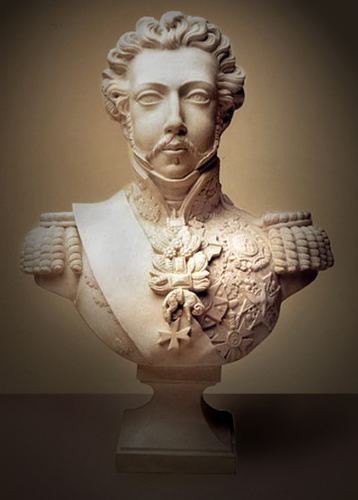Nationality French Occupation Sculptor | Name Marc Ferrez | |
 | ||
Born 14 October 1788 ( 1788-10-14 ) Saint-Laurent, France Known for Bust of Pedro I of Brazil (1826) | ||
Marc Ferrez (14 October 1788 – 1 April 1850) was a French sculptor and engraver who spent a large part of his career in Rio de Janeiro, Brazil.
Contents
Marc ferrez
Early years
Marc Ferrez was born on 14 October 1788 in Saint-Laurent, in the arrondissement of Saint-Claude, Jura, France. He was the eldest of three brothers born in that town. Auguste Ferrez was born in 1795 and Zéphirin Ferrez in 1797. Their parents were a carpenter and a seamstress. In 1809 he entered the École des Beaux-Arts in Paris where he studied under the sculptor Philippe-Laurent Roland (1746–1816) and the engraver Pierre-Nicolas Beauvallet (1750–1818). His brother Zepherin Ferrez (1797–1851) was also a sculptor and engraver, and also studied at the École des Beaux-Arts. The two brothers spent six months in New York City in 1816–17.
Brazil
In 1817 the Ferrez brothers moved to Rio de Janeiro where they joined the Missão Artística Francesa (French Artistic Mission) organized by Joachim Lebreton. Lebreton had brought a group of artists to Brazil, arriving on 25 March 1816. These included the painter Jean-Baptiste Debret (1768–1848), the sculptor Auguste Marie Taunay (1768–1824) and his brother the painter Nicolas Antoine Taunay (1755–1830), the engraver Charles-Simon Pradier (1786–1847)) and the architect Auguste-Henri-Victor Grandjean de Montigny (1776–1850). They were to form the nucleus of a royal art academy in Brazil.
The Ferrez brothers worked with Auguste Marie Taunay, Debret and the architect Grandjean de Montigny on the decorations for the monuments erected on the occasion of the arrival of Princess Maria Leopoldina of Austria (1797–1826) and her marriage with the Emperor Pedro I of Brazil (1798–1834). In 1820 Marc Ferrez was appointed a permanent lecturer at the Imperial Academy of Fine Arts. After Auguste–Marie Taunay died in 1824, Marc Ferrez became deputy professor of sculpture. When Joaquim Alão died in 1837 he became full professor. In 1842 Marc Ferrez made the sculptural decorations of the rooms of Dona Teresa Cristina on the frigate Constitution, which brought her to Brazil.
Marc Ferrez died in Rio de Janeiro on 1 April 1850, aged 61. Francisco Manuel Chaves Pinheiro (1822–1884) was one of his best-known pupils. His nephew, Zepherin's son, also called Marc Ferrez, became a celebrated photographer.
Work
Marc Ferrez made copies of antiques, monumental decorations and classical busts. His copies of statues and plaster bas reliefs were not exceptional but were skilfully executed. Typically they were made from classical Greek models. Most of his monumental work in terracotta has been destroyed, broken while being moved from one place to another. He is now best known for his highly realistic and technically excellent busts. Due to the absence of marble and high price of bronze, he was forced to make almost all his portraits in plaster, which he painted to give the illusion of metal. The only known bronze bust is one of Pedro I (1826).
Some of his works included:
